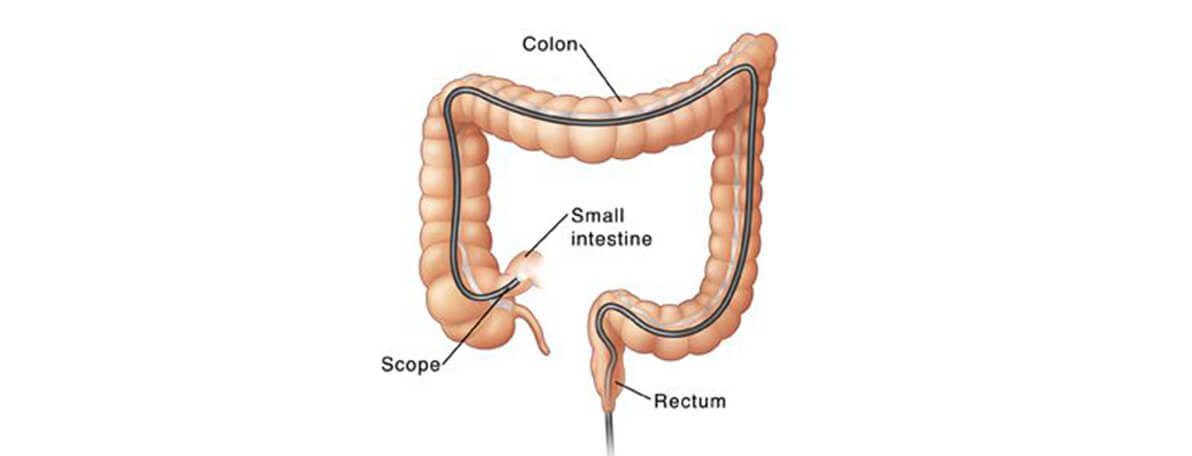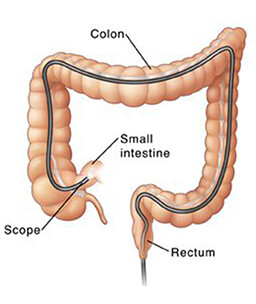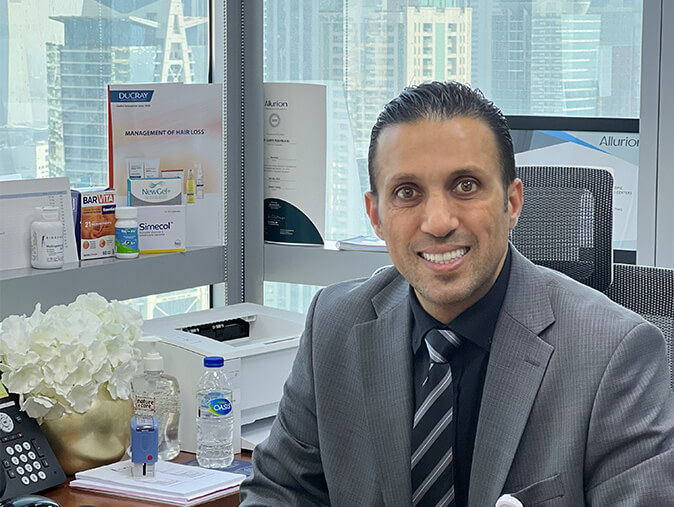What Is a Lower Endoscopy?
Lower endoscopy, which is sometimes referred to as colonoscopy, is an important operation that assists medical professionals in the diagnosis and treatment of diseases associated with the lower section of the digestive system, which includes the colon and the rectum.
A colonoscope is a narrow, bendable tube equipped with a light and camera at one end. The colonoscope is used for a crucial medical procedure called a lower endoscopy. The lower digestive system can only be evaluated when the colonoscope has been cautiously inserted into the rectum and subsequently the colon. The procedure has the potential to aid in the diagnosis of a wide range of conditions, including cancer, colitis, and hemorrhoids.


How The Procedure Works
After being placed into the digestive system, the colonoscope will send high-resolution pictures to a screen for examination. Through this, the doctor is able to conduct an in-depth examination of the lining of the lower digestive system. They can also utilize the colonoscope to take tiny tissue samples (biopsies) or execute modest therapies if it becomes essential.

Benefits of Lower Endoscopy
-
- Highly Informative: Lower endoscopy provides a detailed examination of the lower digestive system, aiding in the identification of numerous conditions.
-
- Least Invasive: The examination involves a flexible tube inserted via the rectum, eliminating the need for surgical incisions.
-
- Treatment Capabilities: Apart from diagnosing issues, lower endoscopy also permits minor interventions such as polyp removal or ulcer treatment.
-
- Quick Process: A lower endoscopy usually lasts between 15 to 30 minutes, which makes it a relatively quick diagnostic test.
-
- Easy Recovery: Patients are sedated during the procedure for comfort, and generally, the recovery is quick and uncomplicated.
Preparation for Lower Endoscopy
Although there are numerous benefits, lower endoscopy is not appropriate for everyone. Certain criteria must be met before a patient can undergo this examination:
-
- Health Evaluation: A comprehensive assessment of the patient's overall health, including an examination of their medical history and current medications, is required.
-
- Signs or Risk Factors: Lower endoscopy is usually advised when symptoms such as abdominal discomfort, altered bowel habits, rectal bleeding, or unexplained weight reduction are evident or when the patient exhibits specific risk factors for diseases like colon cancer.
-
- Informed Agreement: As with all medical procedures, it is crucial for the patient to fully comprehend the procedure, its advantages, and possible risks and to give their informed agreement.
Lower endoscopy is an essential instrument for the diagnosis and treatment of various lower gastrointestinal issues. To determine if this examination is suitable for you, consult a medical professional. Always make sure to collect enough information, consider the advantages and disadvantages, and actively participate in your healthcare decisions.
Initial Observations
Lower endoscopy, commonly referred to as colonoscopy, is a diagnostic method that allows a direct examination of the lower gastrointestinal tract. This technique facilitates a comprehensive investigation of your colon, rectum, and the ending part of the small intestine, the ileum. It is vital for detecting medical issues such as colon cancer, inflammatory bowel disease, diverticular disease, and others, playing a key role in managing gastrointestinal health.
Diagnostic Potential
Lower endoscopy helps in assessing various digestive symptoms, like persistent diarrhea, rectal bleeding, abdominal discomfort, and unexplained weight changes. By providing direct imagery of the lower section of the gastrointestinal tract, this technique can identify irregularities such as
-
- Swelling or infections
-
- Obstructions or narrowings
-
- Formations like polyps or tumors
-
- Diverticula
The instrument used in colonoscopy, the colonoscope, can also collect tissue specimens (biopsies) for additional lab tests.
Therapeutic Uses
Apart from being a powerful diagnostic instrument, lower endoscopy can also perform therapeutic functions. For instance, it can:
-
- Eliminate polyps or other abnormal growths
-
- Halt bleeding from diverticula or other lesions
-
- Expand constricted regions of the colon, known as narrowings
-
- Remove foreign objects stuck in the colon or rectum
This dual function improves patient treatment and often removes the necessity for distinct diagnostic and therapeutic procedures.
Safety Considerations for Lower Endoscopy
Lower endoscopy is typically considered a secure procedure with a minimal risk of adverse effects. When compared to surgical procedures, it is less intrusive, requiring shorter recuperation times. Some potential but rare side effects may include minor discomfort in the abdomen, slight bloating, or, on rare occasions, severe complications such as bleeding or perforation.
Procedure Improvement
Lower endoscopy positively impacts the identification and treatment of gastrointestinal issues. It simplifies the identification of irregularities and offers an opportunity for immediate corrective actions. Its detailed visual assessment greatly enhances clinical judgments and the quality of care for patients.
Mental Advantages
Finally, lower endoscopy is vital in providing individuals with mental reassurance. Understanding their medical status through a definitive diagnosis can alleviate feelings of stress, anxiety, and doubt. Swift and accurate identification of any irregularities can lead to early intervention, often resulting in more favorable outcomes and improved overall quality of life.
Post-Procedure Instructions
Taking a short rest after a lower endoscopy before resuming your daily activities is a key aspect of recovery. It is advised to relax for a few hours post-procedure to allow your body to recover from the effects of the sedative.
Start with light, non-strenuous activities like walking, and gradually increase the intensity as approved by your healthcare provider.
Monitoring and Early Recovery Phase
After the lower endoscopy, patients are usually observed in a recovery area for a short duration. In this monitoring phase, your vital signs are checked, any discomfort is addressed, and the immediate post-procedure effects are assessed.
The healing of your rectal area, which may be irritated due to the endoscope, is also observed. Over-the-counter creams or a warm bath may be suggested for any minor rectal discomfort.
Dietary Recommendations
After a lower endoscopy, it is important to be gentle with your digestive system. Initially, you may need to consume only clear liquids, then transition to softer foods, and eventually return to your regular diet.
Your doctor will advise you to focus on consuming mild, easily digestible foods during your recovery period. To prevent any complications or discomfort, it is crucial to follow these recommendations closely.
Supporting Mental Well-being
Even though a lower endoscopy is a medical procedure, it can have significant emotional impacts, especially if it results in a serious diagnosis. It is important for patients to receive emotional support as they process the results and make decisions regarding further treatment.
If patients experience emotional distress or anxiety following the procedure or due to the results, seeking mental health support, such as counseling or therapy, is highly recommended.
Understanding What to Expect
A lower endoscopy, also known as a colonoscopy, is a non-surgical technique used to examine the colon and rectum. However, as with any medical procedure, there is always a risk of unexpected side effects. Here are some potential issues you may experience after the procedure:
-
- Bleeding and infection: These are typical concerns for any procedure involving penetration or invasion. While they are uncommon, they require careful monitoring.
-
- Unfavorable reaction to sedation: The sedatives used during the procedure may cause unexpected reactions in some individuals.
-
- Tissue injury: Although it is uncommon, there is a possibility that the lower GI tract could be harmed during the procedure.
-
- Aspiration: The inhalation of colon contents into the lungs can happen but is usually avoidable with proper preparation.
Specific Risks Related to Lower Endoscopy
-
- Perforation or tearing: The instrument used in a colonoscopy could accidentally puncture the lining of the lower GI tract.
-
- Excessive sedation: There is a risk of complications from being overly sedated.
-
- Colon stricture: This is a narrowing of the colon, which could lead to difficulties in bowel movements.
-
- Adverse reactions to biopsy: If a biopsy is taken, it could result in internal bleeding or infection.
Irreversibility of Biopsy Results
Remember that once a biopsy is taken during a lower endoscopy, the results are permanent and cannot be altered. Therefore, it is essential to have a thorough conversation with your healthcare provider about what to anticipate from this procedure.
Compliance with Prescribed Medications
After a lower endoscopy, particularly if a biopsy is taken, it is crucial to follow the prescribed medications for pain relief or antibiotics. This might involve:
-
- Consistent intake of prescribed medication: Make sure you take your medicines as directed.
-
- Avoiding specific medications: Some medications might exacerbate your condition or hinder healing.
-
- Identifying medication side effects: Being cognizant of potential side effects of your prescribed medicines and informing your healthcare provider.
Post-Endoscopy Diet
Nutrition plays a vital role in recovery after a lower endoscopy. Staying hydrated and consuming a diet rich in fiber may be beneficial. It is also important to steer clear of certain foods that might irritate the GI tract.
A balanced diet after a lower endoscopy facilitates your recovery, and certain supplements may be necessary based on the findings of your procedure.
Understanding the advantages and disadvantages of a lower endoscopy helps you know what to anticipate. With proper post-procedure care, a healthy diet, and adherence to medications, you can optimize this procedure and ensure a smooth recovery process.
Always consult a healthcare professional about whether a lower endoscopy is appropriate for your specific situation.
Frequently Asked Questions
-
Do I need a special diet afterward?
Usually, your regular diet is fine unless we advise otherwise based on our observations or a biopsy.
-
How do I get ready?
We will provide you with guidelines. Typically, you will need to fast and may need to stop taking certain medications.
-
What occurs during the process?
We carefully insert the endoscope and inspect your lower digestive system using the images transmitted to our monitor.
-
Can I leave immediately after the process?
Definitely, but because we use sedatives, you will need someone else to drive you home. You may also feel slightly sleepy or have a minor sore throat for a few hours afterward.
-
When will I get my lower endoscopy results?
We will typically share our preliminary observations with you immediately after the process. However, if biopsies were taken, those results may take a few days to a week.
-
What distinguishes a lower endoscopy from a colonoscopy?
Both are forms of endoscopy, but they inspect different areas of your digestive system. A lower endoscopy examines the colon or large intestine, while a colonoscopy allows us to inspect your esophagus, stomach, and the start of your small intestine.
-
What is the recovery time?
Usually, recovery is quick. Most people can resume their normal activities the next day. However, you may feel a bit tired or have minor discomfort for a few hours after the procedure.
-
How often should you have a lower endoscopy?
It depends on various factors, including your age, medical history, and any current symptoms or conditions. Your healthcare provider will recommend how often you should have the procedure.
-
Is there an alternative to a lower endoscopy?
Other tests, like a CT scan or barium enema, can also visualize the colon, but a lower endoscopy is often the best option because it can detect abnormalities that other imaging tests might miss. Also, if any abnormal tissue is found, a biopsy can be done during the lower endoscopy.
-
Can I eat or drink before the procedure?
No, you will need to fast for a certain period before the procedure, usually 8-12 hours. Your healthcare provider will give you specific instructions on when to stop eating and drinking.
-
Is the procedure covered by insurance?
Most insurance plans cover lower endoscopy as it is a commonly recommended medical procedure. However, it's always a good idea to check with your insurance provider to understand your coverage.
-
Will I be awake during the procedure?
You will receive a sedative to help you relax and might fall asleep, but technically, you will be awake. The sedative makes most people drowsy enough that they do not remember the procedure.
BOOK Now
Make An Appointment
-

80026763
Contact Dr. Samir if you have any questions
-

Visit
02 Jumeirah Beach Rd - opposite Burj Al Arab - Umm Suqeim - Jumeirah 3 - Dubai
Opening Hours:
9am-9pm (Saturday- Thursday)
9am-6pm (Saturday)





